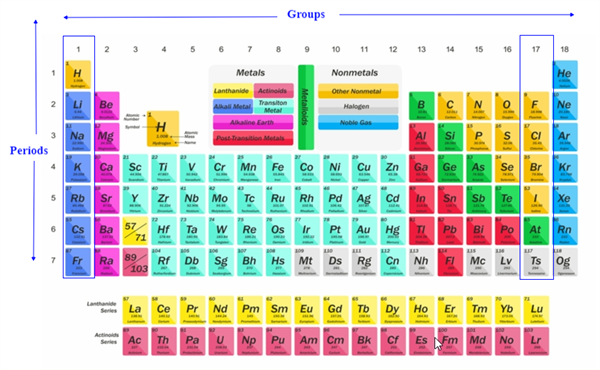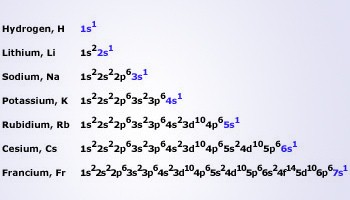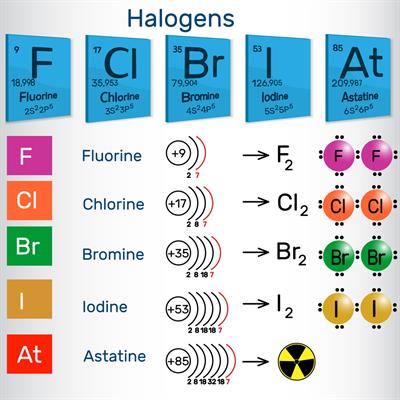PDF chapter test TRY NOW
Position of elements in the modern periodic table:
The modern periodic table is divided into \(18\) vertical columns called "Groups" and \(7\) horizontal rows called "Periods".

Modern periodic table
Let us look at various factors that decide where an element belongs in a particular group and period.
Activity 5.4
1. Look at group \(1\) of the modern periodic table, and name the elements present in it.
The name of elements present in group \(1\) in the modern periodic table is Hydrogen (H), Lithium (Li), Sodium (Na), Potassium (K), Rubidium (Rb), Caesium (Cs) and Francium (Fr).
2. Write down the electronic configuration of group \(1\)'s first three elements.
The first three elements in group \(1\) are hydrogen (H), lithium (Li), and sodium (Na).
Hydrogen (atomic number \(1\)), electronic configuration = \(1\)
Lithium (atomic number \(3\)), electronic configuration = \(2\), \(1\)
Sodium (atomic number \(11\)), electronic configuration = \(2\), \(8\), \(1\)
Lithium (atomic number \(3\)), electronic configuration = \(2\), \(1\)
Sodium (atomic number \(11\)), electronic configuration = \(2\), \(8\), \(1\)

Electronic configuration of group \(1\) elements
3. What similarities do you notice in their electronic configurations?
Hydrogen (H), lithium (Li), and sodium (Na) each have one electron in their outermost orbit (shell).
4. How many valence electrons do these three elements have?
The valence electron of hydrogen (H) is \(1\).
The valence electron of lithium (Li) is \(1\).
And, the valence electron of sodium (Na) is \(1\).
The valence electron of lithium (Li) is \(1\).
And, the valence electron of sodium (Na) is \(1\).
The number of valence electrons in each of these elements is the same. Similarly, the number of valence electrons in each group is the same.

Electronic configuration of group \(17\) elements
For example, Fluorine (F) and Chlorine (Cl) are group \(17\). How many electrons do fluorine and chlorine have in their outermost shells? As a result, we can decide that the periodic table groups all have the same outer shell electronic configuration. On the other hand, as we move down the group, the number of shells increases.
5. When it comes to hydrogen, there is an anomaly because hydrogen can find it in either group \(1\) or group \(17\) in the first period. Are you able to explain why?
Hydrogen shows a dual property by resembling alkali metals (group \(1\)) and halogens (group \(17\)). Hence, there is an anomaly when it comes to the position of hydrogen in the periodic table.
Hydrogen combines with halogens so hydrogen can place it in group \(1\) of the alkali metals.
It also exists as a diatomic molecule and forms ionic compounds with metals in the halogen group \(17\).
Hydrogen combines with halogens so hydrogen can place it in group \(1\) of the alkali metals.
It also exists as a diatomic molecule and forms ionic compounds with metals in the halogen group \(17\).
